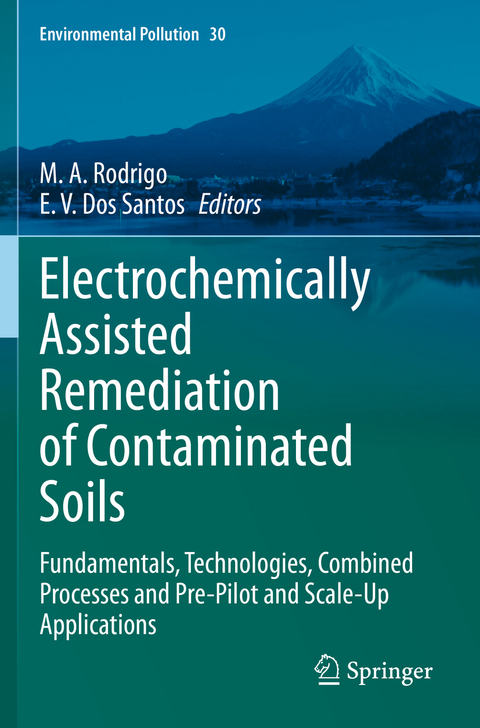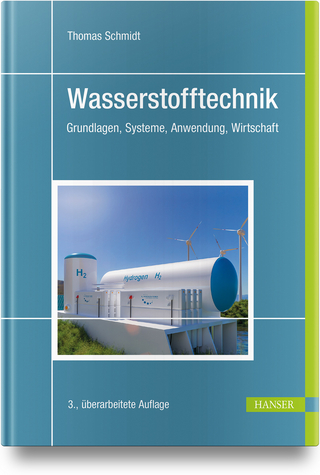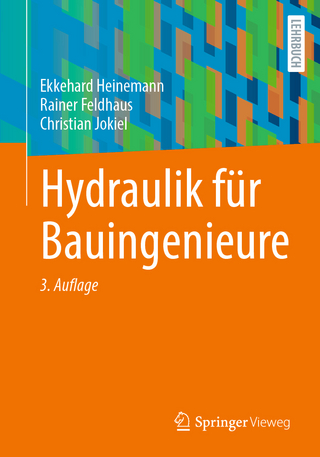
Electrochemically Assisted Remediation of Contaminated Soils
Springer International Publishing (Verlag)
978-3-030-68142-5 (ISBN)
- Prof. Dr. Manuel Andres Rodrigo was born in Plasencia, Spain, in 1970. He obtained his PhD in Chemical Engineering in 1997 at the Universidad of Valencia and since 2009 is full professor of Chemical Engineering at the Universidad Castilla La Mancha. His research interests include on electrochemical water and wastewater treatment, high temperature PEM fuel cells, electrochemical production of oxidants, electrocatalysis, microbial fuel cells and electrochemically assisted soil remediation. He has consolidated a highly competitive and internationally-minded research team, focused on the development of new and value-added applications of electrochemical engineering, with expertise in the frontiers between electrochemistry-energy and electrochemistry-environment and with a relevant transfer of knowledge to the industry. Over these years, he has kept a strong consultant collaboration with many companies in energy and e^330 Q1 according to WoS), more than 80 technical reports for companies and 5 patents. He has supervised 17 doctoral theses and has an H-index of 67 and more than 18000 citations. He has presented more than 400 communications (more than half of them as oral communications) in congresses including more than 50 keynotes. - Prof. Dr. Elisama Vieira dos Santos was born in Santa Cruz, Brazil. She received her Ph.D (2015) in the institute of chemistry at the Federal University of Rio Grande do Norte (UFRN), Brazil. During her Ph.D, she participated as visiting research in the Electrochemical & Environmental Engineering Lab at the Universidad de Castilla-La Mancha (Spain, 2014) under supervision of Prof. Manuel Andres Rodrigo, evaluating the pesticides decontamination from wastewaters and soils by using electrochemical oxidation and electrokinetic remediation, respectively. She is currently Associate Professor in the School of Sciences and Technology at the UFRN. She was awarded with important prize "Women in Science" (2016) by UNESCO and the L'Oreal Foundation for her relevant scientific contributions and developments on environmental protection. Since 2018, she participates as Associate Editor of Quimica Nova journal (Brazilian Chemical Society). Her research mainly focuses on electrochemically assisted soil remediation, electrochemical advanced oxidation processes (electrochemical remediation, photo-electrolysis, renewable energies driven electrochemical technologies) as well as the construction of electrochemical-sensors and electroanalytical techniques for detecting heavy metals and organic compounds in real samples. She has published 54 peer-review in international scientific journals papers, 04 book chapters, and more than 100 conference comumnucations in national and international congresses and 01 patent.
Part 1 1 Physicochemical and hydrodynamic aspects of soil.- 2 Fundamental of electrokinetic processes.- 3 Fundamental of Reactive and Thermal Processes in Electrochemically Assisted Soil Remediation.- 4 Conceptual and mathematical modeling of the transport of pollutants in soil by electric fields.- Part 2 5 Treatment of soil washing solutions by electrochemical advanced oxidation 6 Electrokinetic soil flushing.- 7 Electrokinetic remediation of soil polluted with inorganic ionic species.- 8 Fenton processes for the remediation of polluted soil.- 9 Coupling of anodic oxidation and soil remediation processes.- 10 Persulfate in the remediation of soil and groundwater contaminated by organic compounds.- 11 Electro-phytoremediation of Cropland and Mine-tailings Polluted by Mercury using IrO2-Ta2O5½Ti electrodes, Lavandula vera and Solanum tuberosum.- 12 Electro-bioremediation of polluted soil.- 13 The Soil and Groundwater Remediation with Zero Valent Iron Nanoparticles.- 14 Adsorption and ion exchange permeable reactive barriers.- 15 Electrochemically-Assisted Thermal-Based Technologies for Soil Remediation.- 16 Electrochemically assisted dewatering.- Part 3 17 Fundamentals of the scale-up of the electrochemically assisted soil remediation processes.- 18 Electrochemical Technologies for Petroleum Contaminated Soils.- 19 Treatment of gaseous effluents produced during electrochemically assisted soil remediation processes.- 20 Solar-powered electrokinetic remediation for treatment to soil polluted with organic compounds.- 21 Electrokinetic Processes-Directions for Future Research and Constraints.
| Erscheinungsdatum | 18.06.2022 |
|---|---|
| Reihe/Serie | Environmental Pollution |
| Zusatzinfo | XI, 569 p. 196 illus., 131 illus. in color. |
| Verlagsort | Cham |
| Sprache | englisch |
| Maße | 155 x 235 mm |
| Gewicht | 884 g |
| Themenwelt | Naturwissenschaften ► Biologie ► Ökologie / Naturschutz |
| Naturwissenschaften ► Chemie ► Physikalische Chemie | |
| Naturwissenschaften ► Geowissenschaften ► Geologie | |
| Naturwissenschaften ► Geowissenschaften ► Hydrologie / Ozeanografie | |
| Technik ► Umwelttechnik / Biotechnologie | |
| Weitere Fachgebiete ► Land- / Forstwirtschaft / Fischerei | |
| Schlagworte | Contaminated soil • Electrokinetic combined processes • Electrokinetic Remediation • Enhanced cultures • Experimental and numerical study • Oxidant species • Phytoremediation • Renewable Energies • Soil Characterization • Soil pollution remediation • Water Quality and Water Pollution |
| ISBN-10 | 3-030-68142-4 / 3030681424 |
| ISBN-13 | 978-3-030-68142-5 / 9783030681425 |
| Zustand | Neuware |
| Informationen gemäß Produktsicherheitsverordnung (GPSR) | |
| Haben Sie eine Frage zum Produkt? |
aus dem Bereich


